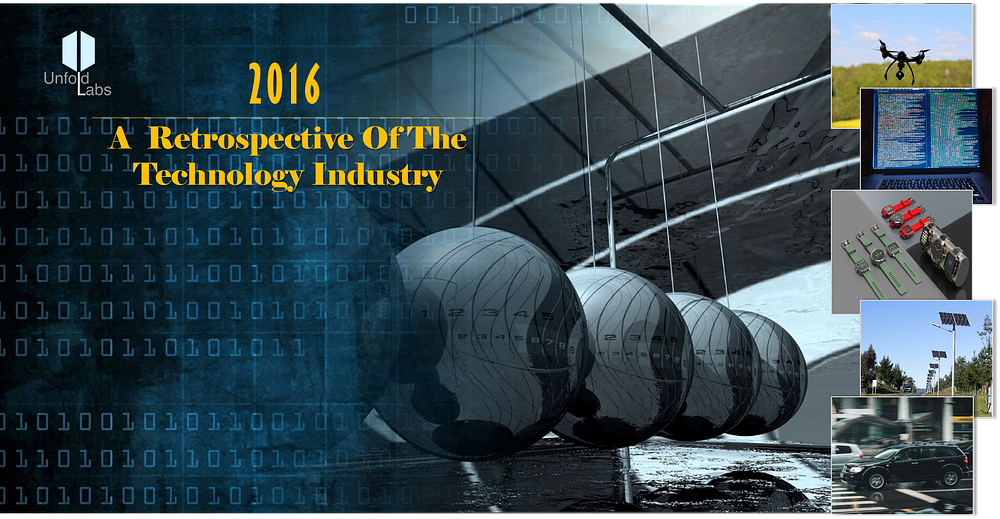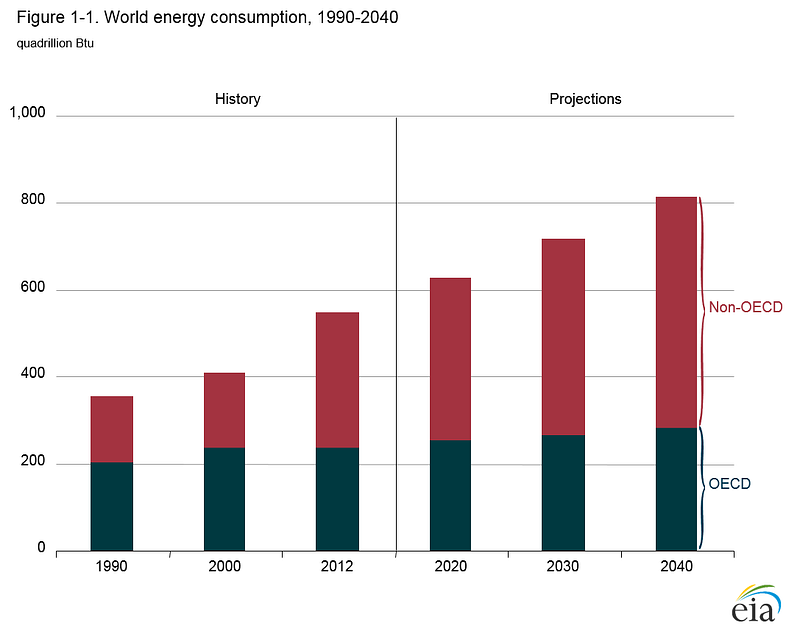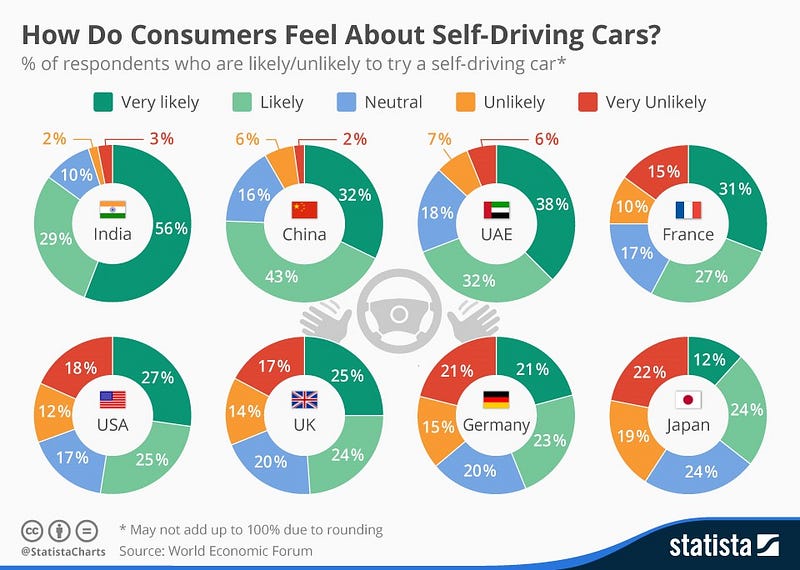2016 — A Retrospective of the Technology Industry

2016was definitely a Big Year for Tech. Technology has been moving forward at a racing pace. With funding and innovation fueling the growth, there were quite a few major happenings. From solar power to self-driving cars, there wasn't a day without news of a tech-related innovation. Major happenings in the tech world — both positive and negative — occurred in 2016 and these are surely just the beginning of much bigger things to come.
A rise in tech startup incubators enabled venture capitalists to provide funding for startups. The capital from VCs enabled early to mid-stage companies in digital healthcare, new media, gaming, mobile, enterprise software, and infrastructure technologies to gain a head start. Moreover, innovation hubs have sprung up all over the world, with cities like London, Tokyo, Seoul, Dubai and many others becoming known for their homegrown advancements in tech.
Here is our view on some of the technology advancements in 2016.
Putting the Sun's Energy to Good Use
One of the simplest, and possibly the most impactful (at least in the environmental standpoint), is solar powered products and services. In 2016, the International Renewable Energy Agency predicted up to 13% of the electricity generated worldwide by 2030 could be by solar power. The US Energy Information Administration reports the world's demand for electricity is expected to grow by more than 50% by 2030.

Elon Musk's SolarCity Corporation, that installs the most solar energy systems in the United States, unveiled the development of a new roof that is entirely solar power capable. These solar powered roofs will go to production Mid-2017, will look like traditional roof tiles and are available in different styles to fit with a home's design.
In addition, Tesla's residential energy storage solution, Powerwall 2, unveiled in October 2016, allows homes to store double the surplus energy of the first generation battery. With the ability to store energy derived from the sun from the solar rooftop tiles, Powerwall 2, can power an average two bedroom home for a whole day.
Solar is making strides and will power the future.
Autonomous Cars Coming up to Speed
There was quite a bit of news about self-driving vehicles in 2016. Google spun out its own separate autonomous car entity, Waymo (new way forward in mobility). Tesla launched Autopilot and Apple confirmed that it was working on autonomous cars. This "futuristic" concept may be up and running sooner than you think. Most of the Automotive OEMs are making significant investments in this sector as well and quite a few collaborative efforts are being unveiled between OEMs & Tech Companies.
The National Highway Traffic Safety Administration (NHTSA) has defined 0–5 levels of autonomous driving. Level 0 means that all functions are controlled by the driver. Level 5, which is eventually the goal for self-driving cars, is the level in which a vehicle is fully autonomous — which means that no driver is needed.

Consumers have shown a lot of interest in self-driving cars, but safety has still been a main concern which is being addressed by the OEMs and tech companies.
Although research into self-driving vehicles gained tremendous momentum, you'll definitely be hearing more about telematics, the long-distance transmission of computerized information, in the next decade. Some of the applications for telematics include:
- Tracking the location & movement of fleet vehicles, freight trailers & freight containers
- Fleet management, that manages the movements of motor vehicles and may include vehicle maintenance, telematics, and scheduling as well as driver, fuel management, and health and safety management
- Satellite navigation that enables drivers to locate a position, plan a route & navigate to a location
- Mobile data for communicating information to carry out tasks remotely
- Wireless safety communications and emergency warning systems for vehicle and road safety
- Car sharing services for tracking usage and billing users
We believe that goods, public transportation and personal transportation will greatly benefit with vehicle telematics in the near future.
The Startup ecosystem understands this and companies like Netradyne are already creating groundbreaking AI platforms to disrupt commercial vehicle and driver analytics. They have a platform that combines AI/data science with video to detect, reason and determine causality of events. Using deep-learning technology, they have eliminated costly, slow-moving systems which used to monitor feeds to identify actionable events, offering a better path to understanding driver events and predicting them as well.
Rush for Smart Data & the Decline of Big Data
Although a recent Gartner survey showed that 48% of companies invested in big data in 2016, organizations that plan to invest in it within the next two have years declined from 31 to 25%. One reason is that many big data projects don't have a tangible return of investment, therefore organizations are finding it less important to invest in big data compared to other IT initiatives.
The initial lure of big data resulted in data for the sake of having data. Once companies found this goal of hoarding data to be useless companies redirected their efforts to focus on collecting the right data that is useful and leads to decisions that make sense for the business to prosper. This has led to a transition from Big Data to Smart Data — collecting and analyzing key data.
However, big data is here to stay as securing and analyzing data continues to rise. There will certainly be an increase in data-driven platforms. This is especially with the emergence of AI, which has been used for predictive analytics by analyzing large amounts of data.
Businesses have been looking to predictive analytics using artificial intelligence (AI), to analyze data to make predictions about how consumers behave in the future by identifying risks and opportunities. Determining patterns in data, such as purchase history, allows decision makers to look forward and anticipate outcomes and behaviors in a more scientific way. This results in improved response rates, buying behavior, retention, and overall profit.

The Surge of BOTs & Digital Assistants
The 2016 holiday season saw a spike in sales of Digital Assistants like Amazon Alexa & Google Home. The BOT ecosystem came into the customer service area in the form of automated customer service available directly from a webpage that is able to assist customers on a 24-hour basis through a computerized dialog system. As these "robots" learn more, they will be able to make much more complex decisions, such as acting as virtual personal assistants.
According to a BI Intelligence survey, 59% of millennials (ages 18–34) and 60% of GenExers (ages 35–55) in the US have used chatbots in messaging apps. These chatbots help users with tasks as diverse as scheduling a meeting or finding where to buy a bottle of wine. This rapid uptake has given a rise to bot startups and businesses investing in bots, which capitalize on the use of AI and messaging apps like Facebook Messenger to create a monetization opportunity.

Organizations like Apple, Google, and Amazon can benefit from autonomous agents in different ways. For example, activities like billing may be completed effectively without human assistance. Furthermore, a company like Amazon would benefit from an automated system that is able to sense the need to order and moving stock or scheduling deliveries.
Game over for Virtual Reality?
Not everything that happened in the tech world in 2016 lived up to its hype. Virtual reality brought a lot of excitement but yielded an overcrowded market. As major players launched their products like Facebook's Oculus Rift, Sony's PlayStation VR, HTC's Vive, Google's Cardboard, Samsung's Gear VR and numerous smaller companies launched their products, a number of unresolved problems with VR surfaced:
- Cost of the Technology
- Still unknown long-term effects on health, such as headaches and blurred vision
- Use of VR other than for gamers
- Ability for companies invested in VR probably won't make money until it becomes mainstream
- The Content Generation Eco-System
- The Delivery Network to handle real time experiences
Moreover, augmented reality, such as the PokeMon-Go phenomenon, took the world by storm but faded almost as quickly. The market seems to be moving towards mixed reality, also called hybrid reality, meaning the combination of virtual reality and augmented reality.
This doesn't mean that it's the end of virtual reality. Aside from the gaming industry, the entertainment industry has also adopted VR technology by creating movies that can be experienced in virtual reality. Moreover, VR is still crucial for other industries like aviation and the military training, wherein having life-like simulations are of utmost importance.
For trends and predictions of the VR market, refer to Unfolding Reality: Trends & Predictions
IoT — Still Trying to Find its LEGS
Internet of Things (IoT), was a major happening in 2016 having its highs and lows. Like VR, IoT has too many players and is suffering from cost pressures. These results are only natural as IoT has applications in media, the environment, smart home & city, manufacturing, transportation, agriculture, and the medical field to name a few. Although it is predicted that there will be a boom in IoT devices, there is no consolidation of technologies to be seen in the near future.

Other problems with IoT include:
- A lack of technical standards
- Privacy concerns
- Ability to interpret large amounts of data
- Storage of bulk data
- Security challenges
- Interface usability
Our prediction is that while IoT as a technology will continue to grow in various verticals in 2017, monetization and profit margins will hinder progress of growth. Nevertheless, Business Insider predicts that over the next five years, nearly $6 trillion will be spent on IoT solutions and businesses and governments will be the top adopters of IoT.
Like many technologies, IoT remains to be a technology with many advantages as well. These include:
- Applicable to various sectors including government, health, environmental, agricultural, retail, and financial
- Used in many applications like wearables, smart homes, Smart Cities, and connected cars
- Ability to interpret large amounts of data
- Controlling home automation
- Aiding in logistics, such as fleet tracking and item location
We will certainly see more of IoT in the coming years as it continues to evolve and improve.
The Drone Zone
Drones have been used in military applications for several years, but 2016 was a year when the use of drones was seen in other applications, one of the most popular being product deliveries. Although the US Postal Service has been looking into drone deliveries, the biggest player in this market is undoubtedly Amazon. There was much hype in 2016 about Prime Air, Amazon's drone delivery system that promises to deliver packages to customers in 30 minutes or less. However, the Federal Aviation Administration's drone policy-making process didn't grant Amazon a permit to test its drone delivery until 2015, which led the company to start testing in the UK.
Read more about drones the future of drones read the blog, Unfolding Drones — the Tech Toy that is here to STAY.
We predict the drone hype will die down in the consumer industry due to privacy, policy and security issues; however corporate users will figure out better use cases and usage for the drones from delivery to smart agriculture and defense.
Since drones can be used in different situations aside from making deliveries, its use will continue and improve. They are already being used in many situations such as:
- Surveying damage in locations that are too dangerous for humans to get to
- Monitoring large crowds
- Apprehend suspects in law enforcement
- Inspecting infrastructure that is difficult to assess
- Imaging and sensor capabilities for farming
Tracking site progress and monitoring stockpiles like sand and gravel in construction.
Wearable Tech's Decline
Wearable tech was a highly anticipated sector in 2016. Like VR, there's no lack of players trying to outdo each other on the trend. With many players it usually translates to no money for OEMs. Wearable technology includes smartwatches. The top five vendors are Apple, Samsung, Lenovo, LG Electronics, and Garmin. There are also activity trackers; wearable toys and clothing, payment systems, and headphones.
According to the International Data Corporation, however, smartwatch shipments fell 32% in the second quarter of 2016. Wearable tech manufacturers need to consider that:
- People usually stop using their wearable device within 2–4 months
- Wearable devices need to be easy to use
- Wearable devices need to designed in such a way that they are functional, yet discreet

Even with the decline in shipments, Gartner predicts that the overall market for wearable technology is expected to exceed 30B by 2020. Gartner also predicts an increase in the number of wearable devices sold worldwide, especially for Bluetooth headsets, which are predicted to reach 140 million units sold in 2017.
As these devices become more efficient, wearables will become just like mobile phones — difficult to live without. Improvements may include invisibility, such as being incorporated into jewelry or clothing. Wearable will also become more accurate and seamless, like being able to interact with smart home devices. Furthermore, there will likely be many more new players in the wearables market, and as more devices become available to consumers, wearables will become more affordable.
For more information on wearable tech, read Wearable Tech Unfolded — The Future is Here!
Our Take
Without a doubt, solar power, autonomous cars, predictive analytics, and autonomous agents all made significant strides in 2016.
Although mostly in the developmental stages for now, it won't be long until most become reality. However, like many developments in the tech industry drones and wearable technology still have challenges to overcome. Does this mean that there's no future for these technologies? Not necessarily, but they will certainly have to make compelling changes to stay in the game.
Many tech unicorns emerged between 2015–2016 and with a global tech market that's predicted to grow at a rate of 4.7% in 2017, many more will surely be born. With the expansion of the US economy, investments in the tech industry, and continuing innovation and new technology, the end of growth in tech is nowhere in sight.
The political atmosphere may hurt the tech sector in the USA. However, the world is becoming more global than ever before. With the increasing globalization of tech consumers, global trends in the tech industry will continue to grow to meet the demand for more high-tech products and innovations.
. . .

